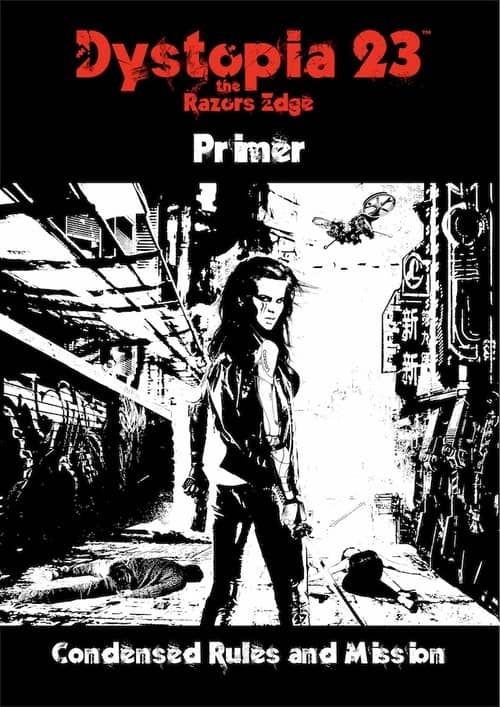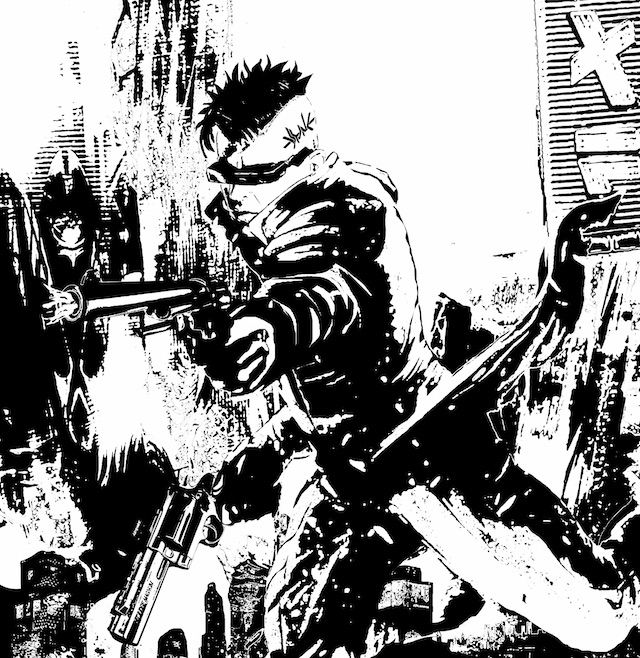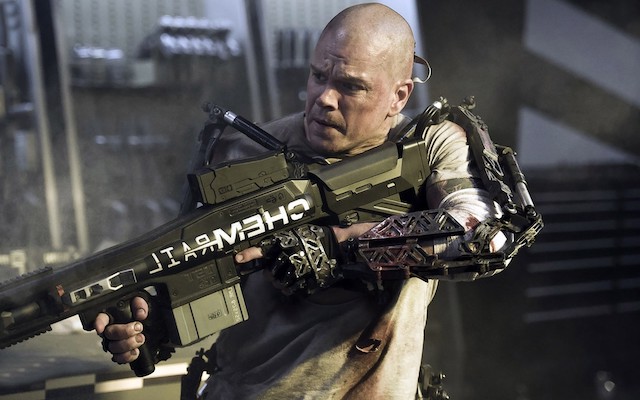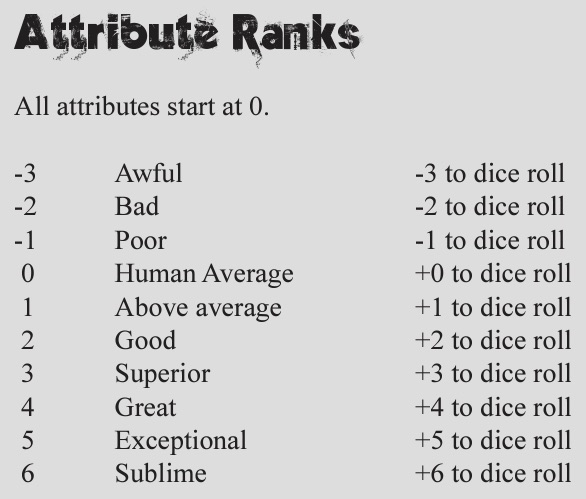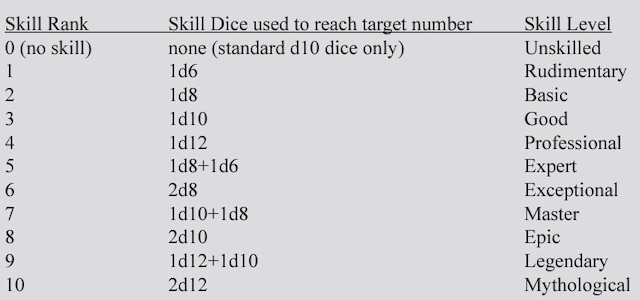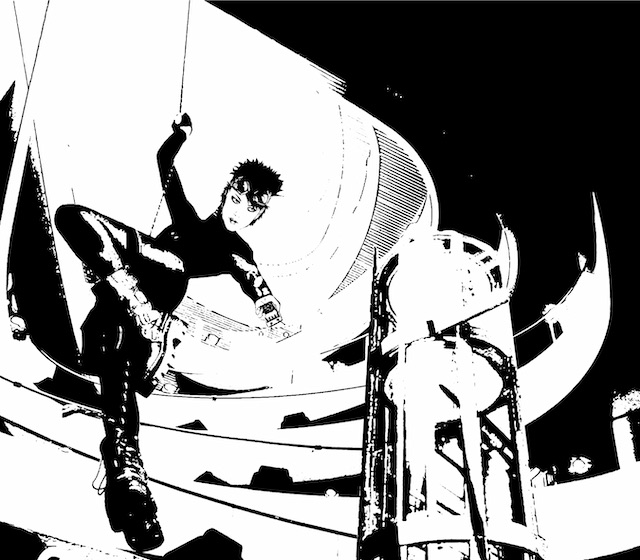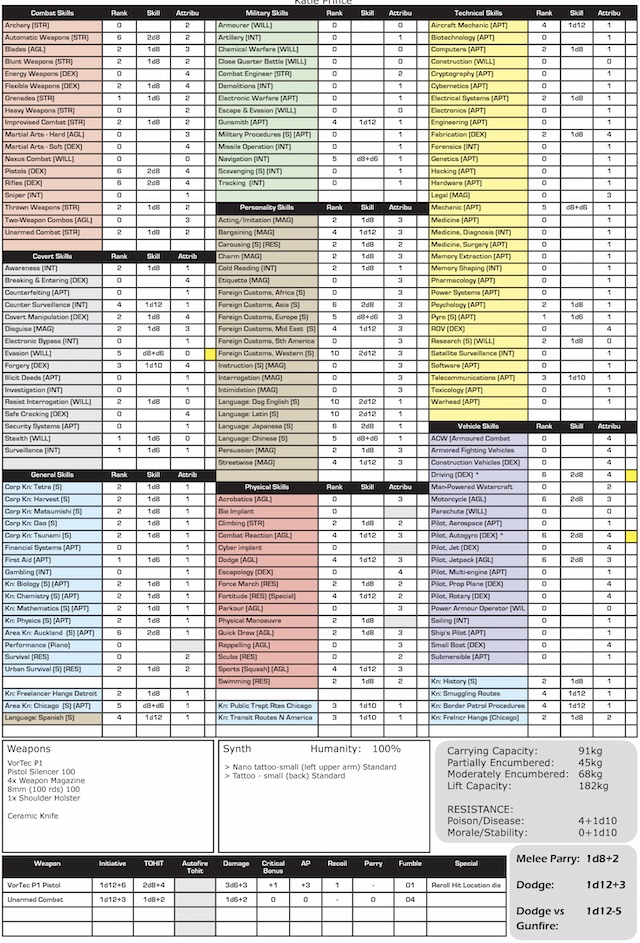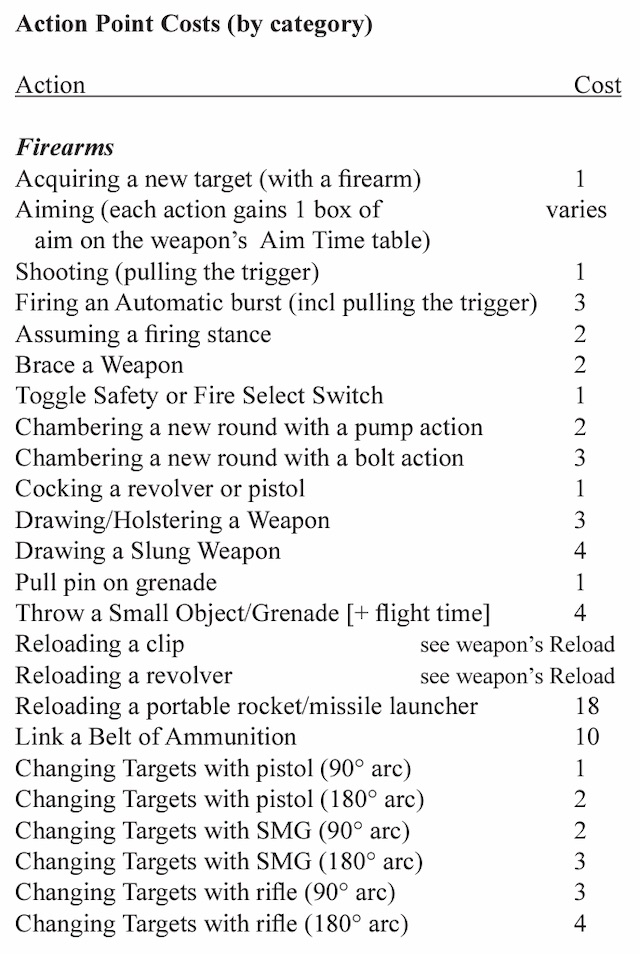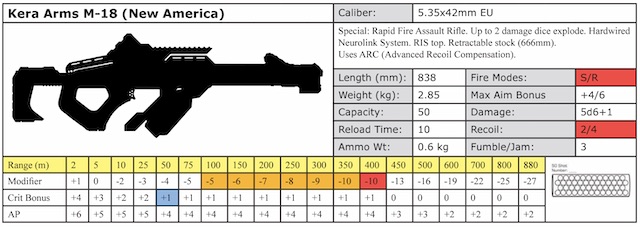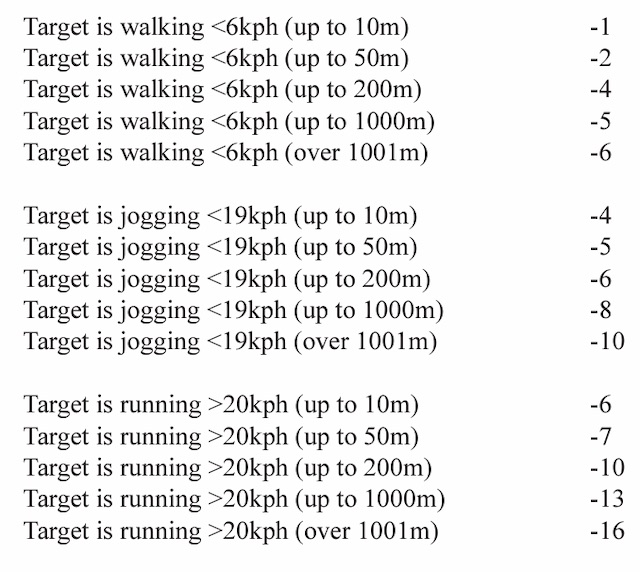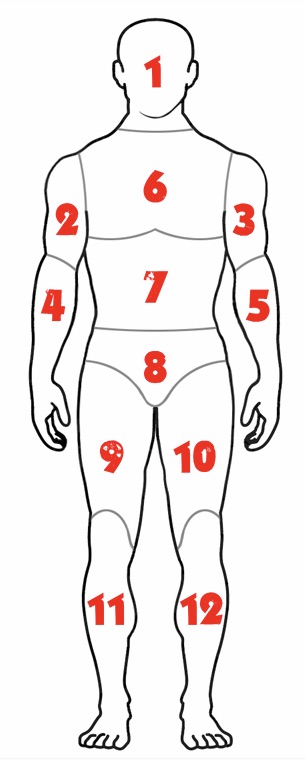Maximizing the Crunch: Dystopia 23
In my last article, I reviewed one of the most rules light systems I have ever read. Some game masters (GMs) and players like games with a hefty amount of crunch — that is, game mechanics that require dice rolling or calculations and with a level of specific details for certain types of tasks. Dystopia 23 may take this to the most extreme I have ever experience. The Primer is 149 pages. By comparison, the quick start rules for The Expanse were 42 pages. For The Witcher TRPG (called Easy Mode) they were 32. For Cyberpunk Red Jumpstart Kit, two booklets were a total of 98 pages — including a lot of flavor text. In terms of crunch, Dystopia 23 pummels those quick start rules into the ground.
When the Dicegeeks podcast interviewed Dystopia 23’s creator, Jason Carruth, he made no bones about how he loved to see a lot of crunch in a game. He reveled in the joy of designing crunchy games.
Before I cover the mechanics, however, let’s talk about the setting. Dystopia 23 covers familiar cyberpunk ground. The game takes place in the 23rd century. After economic collapses and mismanagement, the corporations have become the power in the world. Hordes of impoverished people struggle in the sprawls — vast favelas and slums that buttress up to the walled cities where the middle and upper classes live. Sprawls are unpoliced anarchy, which gangs and other various power brokers seize upon to exert control, often with as careless disregard of human lives as corporations. Even the cities are divided, with corporations having purchased areas for their exclusive use.
The artwork for the book and the videos (you can see at Dystopia23.com) paint a desolate, gritty future. If Cyperpunk 2020 has a bit more glitz and cool in its setting (even if grim and violent), Dystopia 23 drops those in favor of a even more hard scrabble, ugly world. Cyberpunk 2020 characters still care about how they look — they want to make a statement. Show off that new chrome arm. Let everyone know you are the baddest around. Dystopia 23 characters are hoping the clothes they wear aren’t falling apart. In cinematic terms, Cyperpunk 2020 finds more at home with Blade Runner while Dystopia 23 aligns more with Elysium.
Matt Damon in Elysium, distributed by Sony Pictures
The fundamental mechanics of Dystopia 23 rely on rolling a set of dice and getting equal or better than a target number. The game uses a combination of six-, eight-, ten-, and twelve-sided dice. The eight attributes, representing the innate capabilities of a person, are Strength, Resiliency, Agility, Dexterity, Aptitude, Willpower, Intuition, and Magnetism. Each has a rank of -3 to 6, with a starting score of zero in each.
Your capability via skills, however, are designated by specific dice. If a character has no skill, she does not get any dice. From there, players get an escalating type and number of dice based on how skilled they are—from one six-sided die to two twelve-sided dice. The GM sets a target number (little guidance is provided by the primer on this, though a few examples exist in the provided missions at the end of the primer). The player must roll equal to or above that number to succeed. No matter what, any player can roll what is called the Standard die — a ten-sided (d10) die. Every skill is tied to an attribute, for example, Forgery is tied to Dexterity, and if the player as a level in that skill, she adds that die (or dice) to the dice pool. The player also adds the attribute rank to the roll (which could be -3 to +6). Put all these together, roll, add up the numbers, and if you get equal to or higher than the target number, success.
Let’s say Stacy wants to forge a document that allows her access to a private party. Her Dexterity is a 1 and her Forgery is a 1d6. The GM says she needs to roll 13 or better to succeed. The player grabs the d10 and a d6 and rolls them for a 8 and a 4. She then adds the 1 for her Dexterity for a total of 13, just making the roll.
The Standard die can also explode infinitely. If instead of rolling an 8 and a 4 in that forgery task, Stacy rolled a 10 and a 2. Because that 10 is on the Standard die, Stacy rolls and adds that number to the result — and if she rolls a 10 again, she keeps doing that. Other dice do not explode at all or infinitely, unless certain circumstances apply.
Rez wants to weave his motorcycle through a tight spot. The GM says the target number is 15. His motorcycle skill is a 1d8 and his Agility is a 2. As always, Rez uses the Standard die. He rolls a 4 on the d10 and an 8 on the d8. Because the rolled the highest possible number on the skill die, it explodes — Rez rolls another d8 and adds that to his overall total. He rolls a 3. Thus, 4+8+3+2 equals 17. Rez succeeds.
Some skills modify how the exploding die or dice work, which relate to an affinity for that skill: Specializations, Super Skills, and Epic Skills. In the Rez example, he had a Specialization in the motorcycle skills, which is why it only exploded once. Super Skills allow the player to re-roll the associated skill dice if she wants, but she must accept the second result. For example, Nomad is attempting to use Surveillance to keep an eye on a gang leader’s hideout. The GM says the target number is 15. Nomad has a 1 in Intelligence and rolls a 1d6+1d8 for Surveillance. Nomad rolls the Standard die and gets a 2 and rolls the 1d6 and 1d8, getting a 4 and a 3. With his Intelligence modifier, Nomad rolls a total of 10. Not enough. But Surveillance is a Super skill for Nomad. He elects to re-roll the skill dice (he could choose to roll only one — either the d6 or the d8). He rolls a 3 and a 7–a result he must accept. The final total is 13. The gang leader slips out the back while Nomad dozes off.
The Second Side of the Dystopia 23 Character Sheet,
which shows all the skills.
Epic Skills add a 1d6 to the rolls when using that skill and give the player two options. If any of the skill dice turn up the highest possible number on it, it can explode infinitely. Or the player can choose to re-roll the skill dice (or just one or some combination thereof) and accept the result. The player decides after the first dice roll.
Combat follows an initiative-based turn order logic. Actions in combat have a certain cost, referred to as Action Points, though these do not really apply in the primer. The rules here provide examples of Action Points but note that how this works is addressed in the core rulebook. What we have here in the primer is that every player gets 6 actions — and some actions are free (dodging), while other activities cost more actions. Changing a target with a pistol within a 90-degree arc costs one action. If that target requires up to 180-degree arc, then it costs 2. Comparing this to the Action Point table, I can only conclude that Actions and Action Points are equivalent and that the core rulebook will further expand on this.
Sample of Action Points in the Primer
When we come to the weapons table, the crunch of Dystopia 23 comes through. The breakdown and explanation of the table covers at least two whole pages. Some of it is fluff, but much of it has a mechanical result in the game. Each weapon can have a different maximum aiming bonus. In the examples given, the pistol has a MaxAim bonus of 2, while the rifle has a 4/6. The 4 is the normal MaxAim bonus while the 6 is if the player has attached and is using a telescopic sight. Reload time can be different for weapons.
Most games I have played abstract both of these and given a set number. One turn to reload any weapon. A certain number of pluses for taking the time to aim (or decreasing difficulty) regardless of weapon. Dystopia 23 certainly feels more video game-ish in that regard. If I think about my time playing Call of Duty: Warzone, I often make game decisions about which weapon to use based on reloading times. It really blows to get gunned down while watching the animation go slowly through the light machine gun reloading sequence — versus reloading the MP5.
A pistol weapon table
But there’s more….
Recoil is different by weapon and by firing mode (if the weapon has multiple modes). Depending on the range, the weapon has different modifiers in the dice rolling check, critical bonuses, and armor piercing. Players need to know the specific range they are using the weapon at (ruling out the use of range bands or more abstract measuring methods). Some of these ranges are quite small (all in meters): 2, 5, 10, 25, etc. Knowing if a character is 2 meters versus 3 meters away become a critical bit of information. For the pistol in the example, being at 0-2 meters is a +5 for hitting the target versus being 3-5, which is only a +3. Two points difference could be all that it takes to hit. Dystopia 23 encourages the use of a combat grid (specifically a hex grid). As a GM, I don’t see how I could not use a hex grid for combat encounters. Keeping track of specific locations of the enemies (to know if the player is acquiring a new target in the 90-degree or 180-degree arc to calculate the Action Point usage) or where the enemy is in distance.
A rifle weapon table
But there’s more….
Each weapon table indicates the sweet spot of the weapon in orange. Red cells indicate where the weapon outperforms other weapons in its class. Blue cells indicate where the weapon under performs other weapons in its class. And the weapons often have special notes. Minuses or pluses to concealment rolls. Damage dice that explode.
If the weapons tables do not emphasize the crunch and tactical nature of the game, the Attack Modifiers further emphasize this. A stationary target grants a +2 to the attack roll. However, if the target is walking up to 10 meters, a -1 applies to the attack roll. Five levels of walking, five levels of jogging, and five levels of running each have a different modifier to the attacker’s roll. If the attacker is also walking or jogging or running. Those are further differentiated if the attacker is moving at an angle to the target or directly toward or away.
Attack rolls are opposed — but in three different ways. First, the player can dodge. This roll uses the standard d10 plus the Dodge skill plus the Agility attribute with a minus 8. Second, if the character is behind cover, they roll the standard d10 and the dice corresponding the the cover or a direct modification. If Rez is behind good cover, he rolls 1d12+3 along with the standard d10. The cover dice stack, though. If Rez is kneeling behind a brick wall (Strong cover), he gets 1d12+5 for the cover and 1d6+1 for the kneeling. Add if a wooden fence is in front of the brick wall, Ret gets another 1d8+1 cover. In other words, Rez would roll (1d12+5)+(1d6+1)+(1d8+1) in any ranged attack against him. Finally, the player can opt for “The Rule of Ten.” Basically, if you think you have bad dice to defend yourself, you can say the target to hit is 10.
One last example of the nature of the crunch in this game is the Hit Location. Again, most games that use this mechanic usually break it down to head, torso, right leg, left leg, right arm, left arm. Dystopia 23, not surprisingly, goes further. Torso becomes chest, abdomen, and groin. Each limb gets an upper and lower part.
The primer also includes critical tables (i.e., critical hits that result in bad things happening to a character), a bevy of equipment, including cybernetics, and two adventures.
Dystopia 23 is not a game for everyone. For many, it may be a curiosity of an extraordinarily mechanics heavy game. For others, it may be just right. The level of detail and the willingness to work through the calculations and mechanics may be what they desire. Weapons will become familiar, and the ability to know their strengths and weaknesses will come into play. For me, Dystopia 23 has way too much crunch. I like my games to have a bit of heavy mechanics, but more in a realm of abstracting some components and allowing me to avoid having to look up too many tables and calculations during gameplay (Cyberpunk 2020 and The Witcher TRPG really are in my sweet spot). That said, I find the level of detail here fascinating and can see many players enjoying it for that detail.
Patrick Kanouse encountered Traveller and Star Frontiers in the early 1980s, which he then subjected his brother to many games of. Outside of RPGs, he is a fiction writer, avid tabletop roleplaying game master, and new convert to war gaming. His last post for Black Gate was The Party Always Comes First. You can check out his ongoing, play-by-post, referee-less Traveller game at basiliskstation.blogspot.com or follow him and his brother at Two Brothers Gaming as they play any number of RPGs. Twitter: @patrickkanouse. Facebook: Two Brothers Gaming
